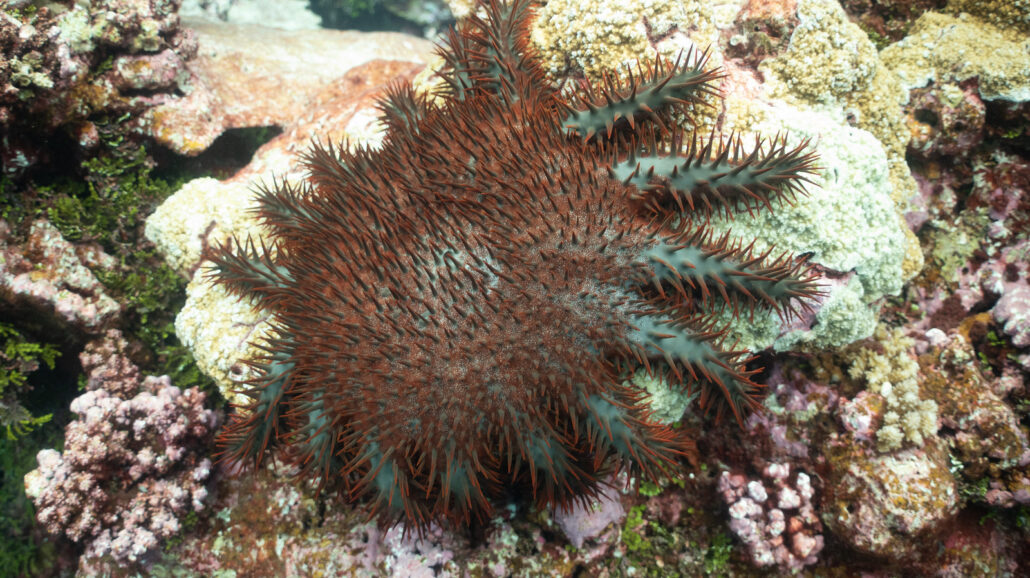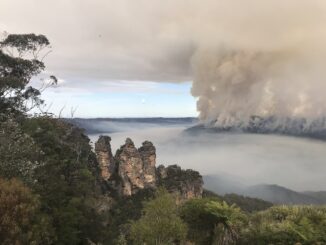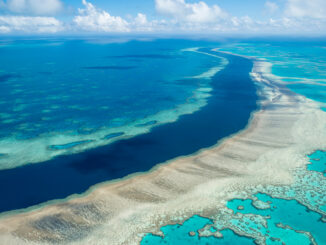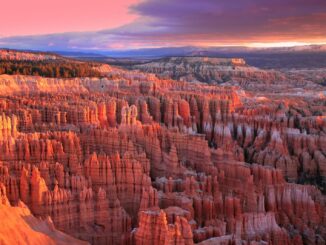
The 2023-2024 Southern Hemisphere summer was the “worst summer on record for the Great Barrier Reef” according to Australian authorities.
High ocean temperatures and a vast coral bleaching event have hit most of the Great Barrier Reef National Marine Park, threatening one of the world’s most biodiverse marine environments. Scientists say human-driven global warming is to blame as heat-trapping greenhouse gases continue to accumulate in the atmosphere, a product of industrial society.
Australian ocean scientists say it’s clear that coral bleaching events at the GBR are becoming more frequent and more severe.
“This is the fifth mass coral bleaching event on the Great Barrier Reef in the past nine summers,” said Scott Heron, a professor at James Cook University, in a synopsis. “Repeated disturbances limit the capacity of reef ecosystems to effectively recover between events, which are projected to become more frequent with climate change.”
Vast bleaching event
In a report released last Friday, the Great Barrier Reef Marine Park Authority said aerial surveys encountered obvious coral bleaching everywhere surveys occurred. The Authority estimates that at least 31 percent of the coral cover shows signs of bleaching.
Coral bleaching occurs when higher-than-usual ocean water temperatures cause coral polyps to release the photosynthetic microorganisms that help keep them alive. The effect has the calcium carbonate coral structure turning bleach white.
Australian Institute of Marine Science researcher Neal Cantin said the current bleaching episode is among the worst authorities have encountered.
“Aerial surveys and in-water transects indicate the current mass bleaching event is one of the most extensive events to occur in the nearly 40 years of monitoring of the Great Barrier Reef by the Australian Institute of Marine Science,” Cantin said in a brief. “Three-quarters of the reefs surveyed contained some level of coral bleaching, with a third of the reefs surveyed showing prevalence of very high (61-90% of shallow corals bleached) or extreme bleaching (>90% of shallow corals bleached) across all three regions of the Great Barrier Reef, for the first time ever.”
The bleaching isn’t the only problem underway. Scientists say that the GBR is also currently experiencing a mass infestation of crown-of-thorns starfish, a voracious predator that feeds on coral.
Some resiliency
Not all hope is lost, however.
Recently published research shows that coral reefs can be rehabilitated and helped to recover from damage caused by coral bleaching or from physical destruction. Parts of the GBR have been found to be more resilient to climate change and coral bleaching.
A study out of the University of Queensland has found that deeper portions of the Great Barrier Reef appear to be “insulated” from global warming and rising ocean temperatures, including during heat waves. Cooler ocean water temperatures at lower depths, some 30 meters to 50 meters down, appear to keep warmer waters at bay and thus protect coral colonies surviving in deeper waters.
However, the researchers behind that study fear that the protections enjoyed by deeper portions of the GBR may become weaker or eroded should the effects of climate change continue longer or worsen.
“Our study offers both hope and a warning; hope that some reefs are resilient to current levels of climate change, and a warning that this resilience has its limits,” said Peter Mumby, a professor at the University of Queensland’s Centre for Marine Science.
World Heritage no more?
Of more immediate concern is the status of the Great Barrier Reef as a World Heritage Site, a designation that helps draw millions of tourists to the world’s largest coral reef system.
That designation was bestowed on the GBR by the United Nations Educational, Scientific, and Cultural Organization (UNESCO) in 1981. Last year, UNESCO came very close to downgrading the status of the Great Barrier Reef to a heritage site “in danger.” The Australian government fears that such a downgrade could negatively impact tourism to the GBR.
UNESCO eventually tabled the proposal, but officials there promised to review their decision in a year. That review is expected to occur sometime during the midpoint of this year.
News that the GBR is experiencing the most challenging climate change-driven conditions since monitoring began arrives at a bad time for the marine park’s defenders, but the Australian government is moving on the problem.
The Great Barrier Reef Marine Park Authority is in the midst of its landmark Reef 2050 Plan that will see conservationists spend billions of dollars to protect and rehabilitate damaged portions of the GBR.
The plan and Australia’s pushback at UNESCO are clear signs that the government in Canberra is determined to conserve the Great Barrier Reef in perpetuity for generations of future ocean and marine life lovers to enjoy. The government will be reviewing its Reef 2050 Plan soon. “The upcoming review of the Reef 2050 plan needs to show ambition and align with the scale of the challenge,” said Australian Academy of Science president Chunnupati Jagdish, “acknowledging that there can be no quick fix and putting all options on the table.”
©2024 Public Parks
Park Info
Park:
Great Barrier Reef National Marine Park
Location:
Australia
More Information:



